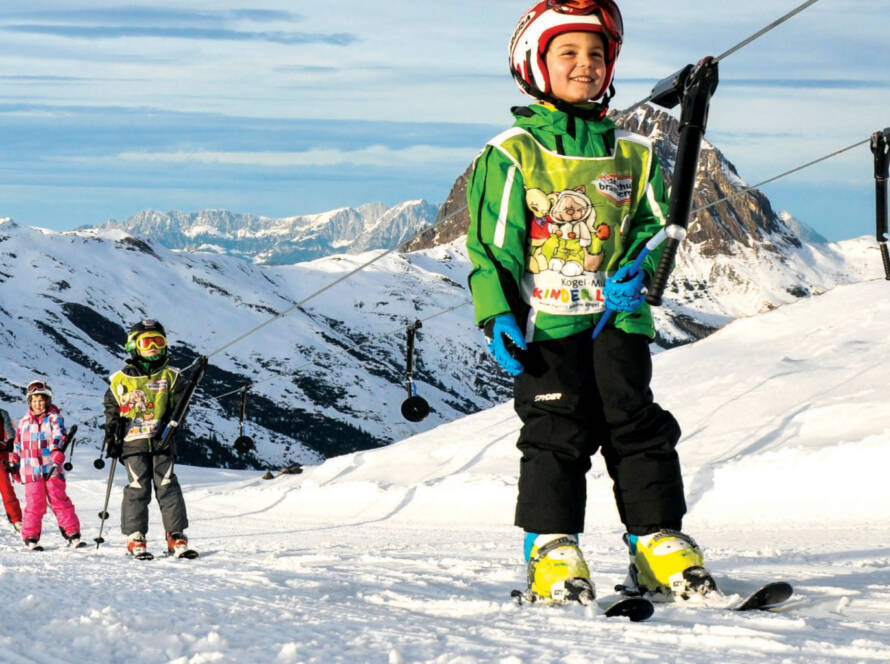Groomers must work in all weather conditions – day and night. One of the biggest challenges is resolving the texture and contours of snow because the highly reflective white surface tends to appear flat under artificial light.
Unfortunately, very little attention has been given to improving snow-cat lighting to help overall performance through enhanced visual acuity. This is because most snow-cat manufacturers use conventional halogen headlamps or supplemental metal halide light bars. More recently, some groomers have installed LED lamps for LIGHTING supplemental lighting. None of these technologies are specifically designed to illuminate snow.
Conventional lighting uses a concentrated source like a circular bulb and a dispersion reflector. Headlamps are designed to throw light forward in a concentrated well-defined beam, similar to a flashlight. Using a duel beam or “stereo” installation, there should be sufficient overlap to provide visual coverage over an intended target. This may work well for driving down a roadway, but it is not ideal for grooming a wide area in multiple passes. One missed line can leave “crud,” grooves and chunks of snow that can be dangerous for skiers and riders.
[Figure 1: Conventional headlamps project beams of light that usually generate a “V” formation]
As Figure 1 illustrates, conventional headlamps project beams of light that usually generate a “V” formation. For roadway lighting, the objective is to provide an overlapping configuration that appropriately illuminates in advance of the vehicle to reveal road contour and any obstacles.
Groomers understand that they must deal with a much wider area with less defined edges that would normally be associated with a roadway shoulder. Moreover, since slopes vary in their degree of pitch, lighting must be directed to meet the snow surface at an angle that does not bounce light back at the operator’s cabin, but instead disperses along the downward plane. Since a snow-cat deals with wide swaths of surface with each pass, the ideal lighting situation would be a uniform field of intensity that reveals all features without glare or variation. It is easy to see how conventional beams produced by headlamps can leave a void if a solid intersection of the “V” pattern is not projected.
To address the basic lighting challenge, many groomers have resorted to a multi-fixture light bar that uses several lamps in a spread to create a solid overlap. Many of the new configurations use an LED array. Although this approach reduces lighting voids ahead of the snow-cat, it still projects illumination forward, leaving insufficient light within the grooming target. This becomes more of a problem when it is snowing or snow-making is in progress – light refraction from the falling snow interferes with visual perception of the snow surface.
Areas that have night lighting often supplement by keeping fixtures on during grooming. This provides a comprehensive perspective, but does not necessarily give an accurate visual reference directly ahead of the cat. An interesting solution has materialized from mountains that have implemented wide area Snow-Bright™ lighting from Ultra-tech™ Lighting. Areas like Steamboat Springs in Colorado and Mt. Peter in New York have experienced more accurate nighttime grooming when illuminating slopes because the Snow-Bright™ spectrum is specifically matched to the reflective and refractive indices of snow. This raised the prospect of installing Snow-Bright™ fixtures directly onto cats to achieve a higher visual acuity, which leads to greater grooming accuracy.
Snow-Bright™ comes in lightweight 60watt and 150watt models, making it relatively easy to mount the same slope fixtures on a light bar or the cabin roof and mirror mounts. Since fixtures are highly efficient, they can be powered using a standard inverter that takes 12 volt, 24volt or 48volt to either 120V AC up to 277V AC. There are no filaments in Snow-Bright™ bulbs, so they are not sensitive to vibration and units come with a standard U-bracket, allowing for easy and flexible mounting.
It is important to consider the visual comfort of the operator, too. High glare can cause eye fatigue, headaches and reduced eye-hand coordination. Artificial light can impact sleep patterns (circadian rhythms), mood and even the immune system. Maximizing eye comfort and visual efficiency reduces adverse impacts upon machinery operators. By using the snow surface as a “light carrier” instead of a reflective surface, less light provides greater detail and depth perception.
Figure 2 illustrates the Snow-Bright™ magnetic induction lighting installation at Steamboat Springs, Colo. All the surface details are uniformly illuminated as the light refracts through the snow surface. Unlike conventional metal halide and high-pressure sodium lighting, lighting levels are consistent, eliminating hot spots and voids. This is particularly important when evaluating a surface for grooming where contour and slope angle are considerations.
A high-pressure sodium fixture emits a sharp “hot” beam of light with a well-defined “V” pattern. Aside from obvious voids, snow detail is not observable because the orange monochromatic spectrum flattens the snow appearance, obscuring contours, depth and features. Even when sodium lamps are used during grooming, the effect of additional light is negligible because it does not assist in seeing details on the snow.
Objectively, more visual acuity simply means better grooming, better quality and a better customer experience. Each year, snow-cat manufacturers try to introduce new features that can improve performance, but, unfortunately, lighting has not been addressed, other than the use of LED headlamps that do not improve the visual experience. To be sure, magnetic induction lighting like Snow-Bright™ is not designed like a headlight and would not be used for that purpose. The coincidental ability to mount the smaller 60watt and 150 watt fixtures using an inverter provides an easy way to maximize grooming visibility.
The expression “I can’t see for looking” applies to grooming. It means you’ve been looking too long and too hard, but you can’t see what you’re looking for.
Experiments with various lighting schemes demonstrate the effectiveness of using a “field” of light as opposed to a focused beam. Notice the effects of using a single 60watt Snow-Bright™ light mounted on a snowmobile. When mounted on a snow-cat, the light can be projected further along the visual field since the mounting would be higher. The wider visual field combined with extraordinary snow surface detail improves the effectiveness and increases the positive outcome.
Nikola Tesla invented magnetic induction lighting in 1891 where it was rejected by Thomas Edison – the bulbs lasted too long and that was not a good business model. After more than 126 years, Tesla’s invention is answering the call for the highest quality light using the least amount of energy.


![[image placeholder]](https://www.snowopsmag.com/wp-content/uploads/2023/09/placeholder@2x-890x664.png)
